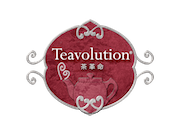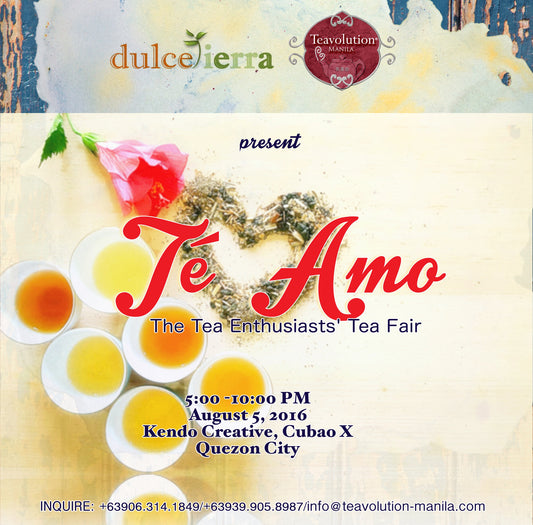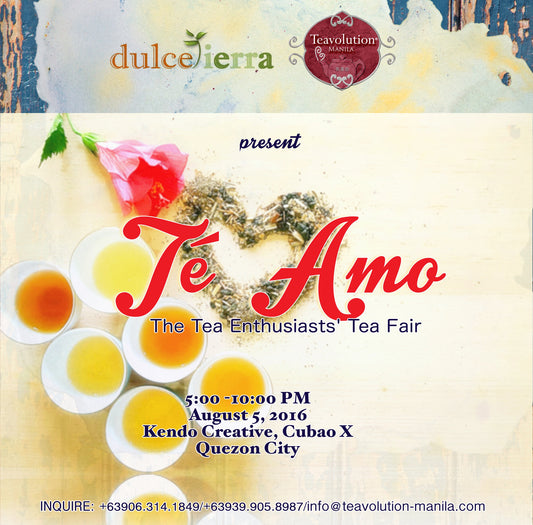Thankful to Ms Monique Toda for the feature! Reposting this here but original publication was HERE

The year started with a resounding Omicron bang. I did not see it coming, or maybe I was in denial. Just when we thought the numbers were at a low and were finally planning for a “normal” life, this new variant hit us hard.
I had so many things to do, loved ones to visit. While I wait it out, it is best to focus on wellness and self-care. We all find ways to navigate through tough times in order not to go bonkers.
So, with my frayed nerves and all, I search for solace in something. My default attitude is optimism—not immediately, though. I first stew in worry and create dramatic life storylines in my head for a bit. Then I make an effort to find refuge in the middle of a storm.

The serenity of tea rituals has always appealed to me. I even took a class from a tea master in Japan. I loved learning about its history, why certain actions are done, what specific food is served and, of course, valuable information on teas.
Following a ritual of being mindful of the amount of tea we prepare, how much water and the temperature we use, and the length of time we infuse the tea, relieves us of the chaos within.
Sheryl Ebon-Martinez is a certified tea sommelier who studied at the International Tea Masters Association and took foundational courses on Chinese tea from a renowned tea master based in Yunnan, China. This is the birthplace of tea.
She pursued Zen studies to get a finer and more profound understanding of tea rituals. She even learned how to make her own teaware.
Sheryl has continued to study tea for the past seven years, and intends to take courses on herbalism to learn more about wellness teas, or tisanes, and herbal infusions. Despite all this knowledge, she prefers to be called a “chajin,” or simply, a tea person.

Sheryl believes that she was “called into teas.” She was at a point in her life where she wanted to change some of her reality.
“I was a working mom and I was stressed to the bones. I lost myself in those years. I wanted a ritual of sorts and got into tea. Something happened at that time, something I now call an encounter with my lost self. It was an ‘encounter with a friend from faraway,’ as author Natalie Goldberg would say. When I made that particular tea at that moment, I had a glimpse of that ‘self.’”
This personal transformation happened in January 2014, and by mid-year, Sheryl resigned from work without any prospects. She discovered the art of blooming flower teas. Before she knew it, she was sleeping at 3 a.m., reading up on the topic, emailing suppliers, and putting up her online teashop. Teavolution PH was set up in two months.
She claims, “It’s been seven years since then, and I’m still here because there’s a lot more I don’t know. There are still many things I want to start here in the Philippines as far as tea is concerned.”

We can’t imbibe something without knowing where it came from, or how it came to be. In a nutshell, tea was discovered 5,000 years ago in the forest of Yunnan, China. There were also ancient tea trees found at its borders with Laos and Myanmar.
It was first prescribed as an all-around panacea or medicine until the Tang Dynasty in China. It evolved into a cultural beverage, and tea drinking became a favorite pastime among emperors, philosophers, monks, and the elite. It was also during this time that Buddhist monks from Japan and Korea came to study in China, and when they returned to their respective countries, they brought back tea seeds and the tea-drinking habit.
During the Age of Exploration (15th to early 17th centuries), tea was exported to Europe. It became hugely popular in Britain, which we know has created its own culture and tradition around this beverage. But enough of the history lesson.
According to Sheryl, “Various research has proven the benefits of drinking tea for its antioxidant, antibacterial, and anti-inflammatory properties. One has to drink tea daily to notice the difference."
“Two of the leaf’s most prominent compounds are caffeine and L-theanine. The latter basically tempers the effects of caffeine so we get what we call ‘mindful alertness’ when we’re drinking tea. There’s alertness because of the caffeine, but because of the L-theanine, an amino acid that effectively improves focus and mental functions, it lessens anxiety and stress.”
Bingo! This makes it a perfect beverage, especially during this Omicron surge.

Complementing the calm and mindfulness that teas provide is the ritual or its preparation, which is just as comforting.
“I believe being intentional about what we do on a daily basis makes a lot of impact. Carving out even a short 10 minutes, and choosing a quiet time to do it, makes all the difference. Following a ritual of being mindful of the amount of tea we prepare, how much water and the temperature we use, and the length of time we infuse the tea relieves us of the chaos within."
“Tea and its preparation is a multi-sensory experience: each variant of tea has different aromas, different layers of flavor. It has numerous aesthetics that you can adapt, or you can create your own. So the parameters of preparing tea the proper way are there, but it’s not so rigid that you have to follow everything."
“There’s a lot of freedom in tea making because, at the end of the day, it's how you make it. And to apply this to our lives amid the pandemic, it simply means that we should only pay attention to matters we have control of. It’s basically terrifying to keep harping about things that we can’t control, which is where our suffering is usually rooted.”

But what about tonics? The difference between tea and tonic is simple. Tea includes all infusions made from the leaves of the species with the scientific name Camellia sinensis, while a tonic is derived from all other plants and their many usable parts intended to improve overall wellbeing.
Sheryl explains further, “Tonics are basically anything that helps improve your wellbeing. We can refer to them as wellness herbal or tisane infusions, oil infusions, tinctures, syrups, or herbal powders. It uses natural ingredients that have pharmacological properties mainly from plants and animals and should have reinvigorating, refreshing, moisturizing, and restoring effects on the individual. Chinese traditional medicine, India’s Ayurveda and Greek tonic traditions are the most enduring and effective.”

Aside from therapeutically spending time savoring tea each day, Sheryl recommends taking four cups for minor anxiety. For this purpose, she personally prefers matcha Japanese green tea and oolong tea. She extends her teatime to 30 minutes to an hour and does not leave the table until she feels better.
“There’s something about these teas that jolts me out of anxieties, worries, and whatnot—and brings me back to the present moment, which is what really matters in life.”

For stomach troubles including GERD, one can try pu-erh tea, as well as a chamomile tisane. Of course, she strongly advises that those with serious conditions seek the help of medical professionals for proper treatment. Tea can only supplement a physician’s advice and is not meant to replace medical prescriptions.

I can’t emphasize enough how self-care in various ways is our key to survival in this COVID tornado. We need to find inner peace and a clear awareness that this storm will pass. In the meantime, keep calm and sip some tea.
Sheryl’s ginger tea for colds
(An immune-regulating herbal tisane, this herbal blend is called the Dai Lemon/Ginger/Black Sugar Tisane.)

Ingredients:
- 1 cup of ginger
- 1/2 lemon
- 1/2 cup of black sugar/muscovado/honey
- 700 ml (24 oz) filtered water
Preparation:
- Add the water and ginger to a pot.
- Squeeze the lemon juice into the water (seeds and all), and then add the entire 1/2 lemon to the water.
- Add the black sugar/sweetener of your choice into the water and bring all of the ingredients to a boil.
- Reduce the heat by bringing everything to a simmer, and then cover pot with a lid.
- Simmer ingredients for 15 minutes, and then serve.
- This tisane will stay potent in the fridge for about a week. A standard serving is about 12 oz.
For those with cold symptoms, two full mugs a day for three days will help provide relief. Take one full mug every day to help prevent colds.
Visit Teavolution PH, and follow the tea brand on Facebook and Instagram. They can also be reached via Viber at 0927-395-2454.



